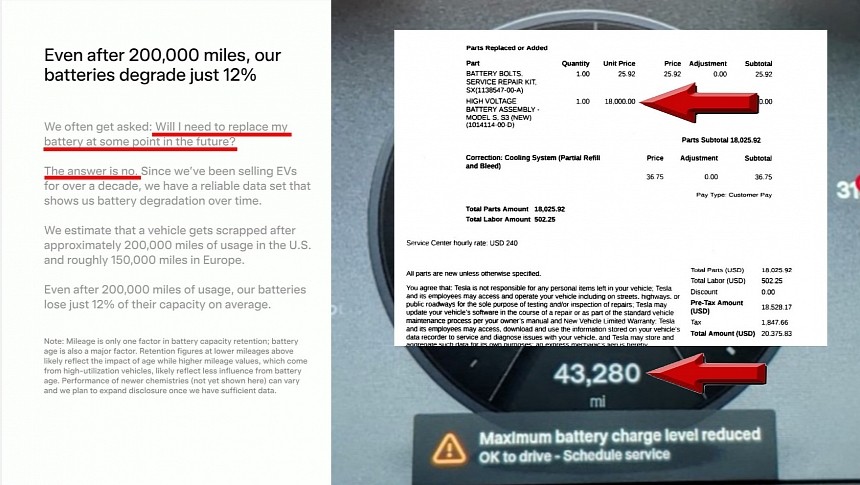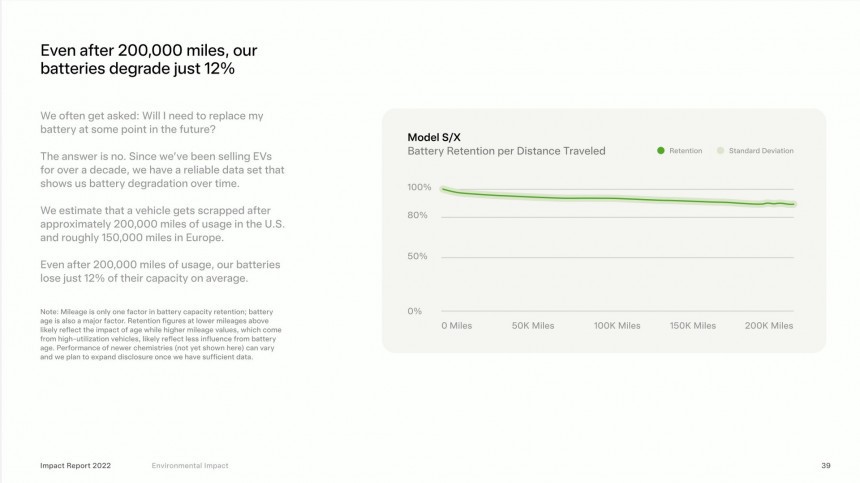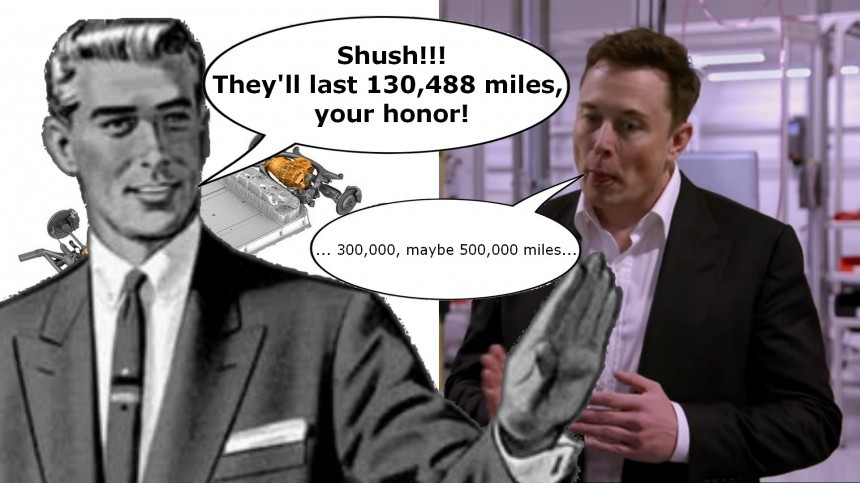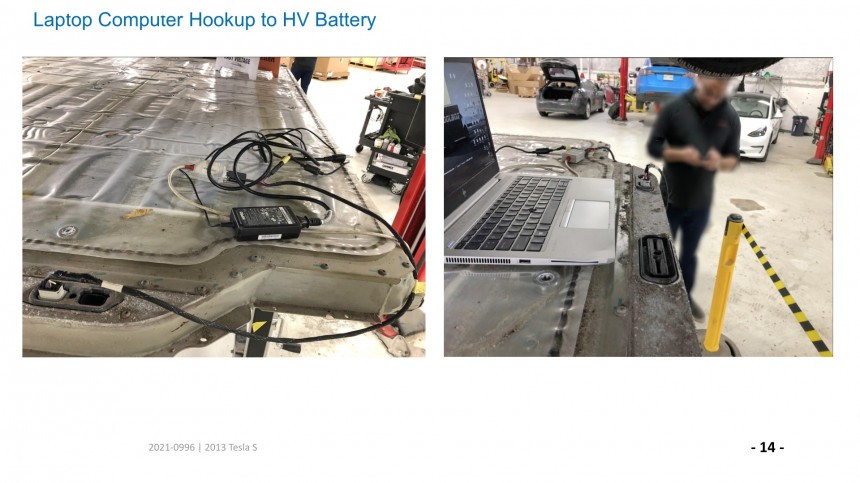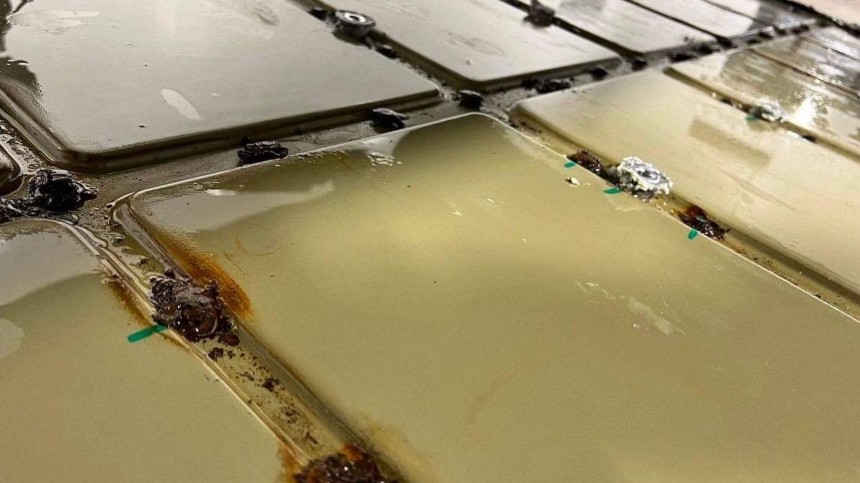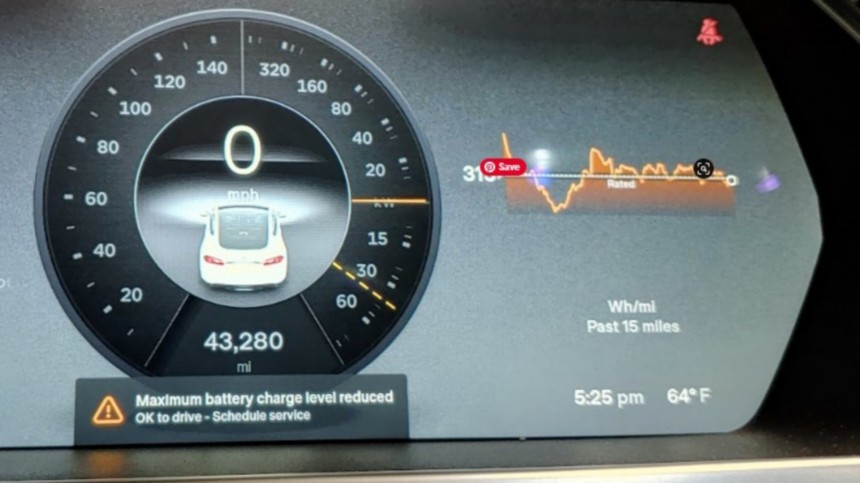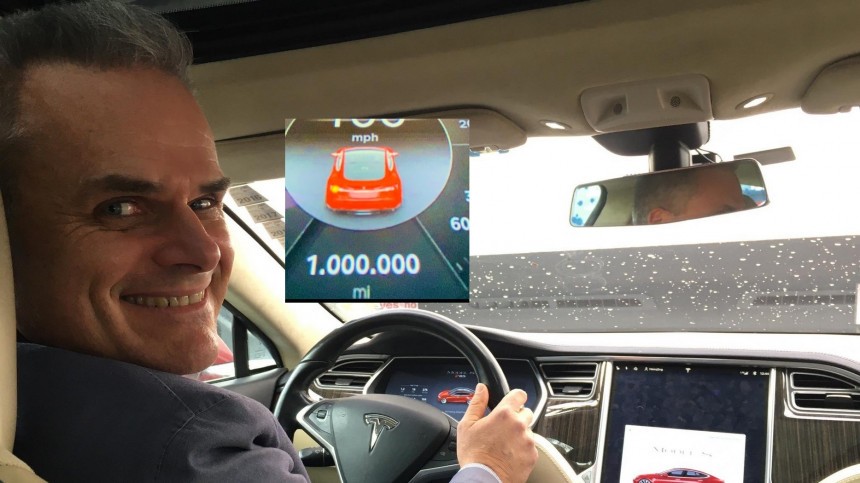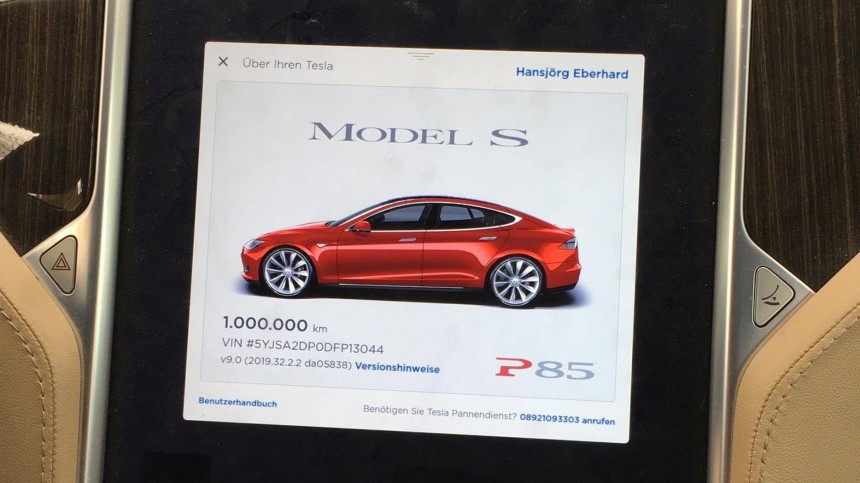When you check that part of the Impact Report 2022 (page 39), you can see that Tesla used the Model S and Model X as examples. However, it refers to their packs as "our batteries," as if all of them were the same. They are not: the battery packs on the Model Y and Model 3 use different cells. Their battery management systems (BMSs) must also have improvements and other technical solutions. Not even the chemistry is the same on all battery packs.
If Tesla were a person, I'd dare them to say that to the face of the several customers who had to replace their battery packs – whether under warranty or from their own pockets. The list is long. Take only the Facebook group I mentioned: it had 165 members when I started writing this and already has 169. Companies were created to provide remanufactured battery packs to Teslas because the number of vehicles that would need one was relevant. How can Tesla say that "the answer is no"? Only if the question was different. But it gets worse.
Bear in mind that Tesla's lawyers told a German court its cars should not last more than 130,488 miles (210,000 kilometers). Elon Musk said in 2019 that "the current battery pack is about maybe 300,000 to 500,000 miles." Who should you believe? The company seems to wish that you trust it and its CEO before purchasing its cars and its lawyers after the deal is sealed. It could be the opposite: believe Tesla's lawyers before buying its vehicles and the company and Elon Musk in court.
"Mileage is only one factor in battery capacity retention; battery age is also a major factor. Retention figures at lower mileages above likely reflect the impact of age, while higher mileage values, which come from high-utilization vehicles, likely reflect less influence from battery age. Performance of newer chemistries (not yet shown here) can vary, and we plan to expand disclosure once we have sufficient data."
There you have it: Tesla itself admits the Model S and Model X battery packs do not reflect the conditions that all these components made by Tesla will offer in the future. That said, there is no sense in talking about them as if they did. At best, they offer hope that the newer battery packs can perform in the same way – but that is not for sure. However, that is not the most critical part of the fine print.
Let me rephrase that in the most straightforward way possible: Tesla seems to hope that its cars will end before their batteries do. Sadly for the company and even more for its customers, that has not been the case. Whether due to mileage or age, these buyers eventually receive a hefty estimate for a battery pack replacement.
Bob Atkins is a good example. He replied to a Tesla tweet talking about the Impact Report with a compelling example. Sharing pictures of a Model S with 43,280 miles with the BMS_u029 error, he stressed that "people need to know that older Tesla cannot be judged in value based on mileage or appearance."
If we did like Tesla's Impact Report and only considered that battery packs age in the fine print, we'd state that these components would only lose 12% capacity after 200,000 miles. That would mean a high-utilization vehicle would confirm what the BEV maker said regarding battery pack replacements, correct? Ask Hanjörg von Gemmingen about that.
The bad news for the BEV maker is that he did that with three battery packs, with the first two replaced under warranty. The first failed when the car had 290,000 km (180,197.7 miles) on the clock – below the 200,00 miles with which the battery pack would still have 88% of capacity. Von Gemmingen drove with a temporary second battery pack for 150,000 km (93,205.7 miles) until it was replaced with the third one, which has lasted almost 727,000 miles (around 1,170,000 km) so far. One battery pack contradicts Tesla, one exceeds what it promises, and the one in the middle did not have time to prove anything. Until we have more examples, we can call it a tie.
That puts the idea that battery pack replacements will not be necessary to rest. If you are buying an electric car with the idea of keeping it for several years, prepare yourself to eventually replace the battery pack or to keep trading it in for a newer model before the warranty expires. That's probably what Tesla expects you to do. Just don't tell me this is the most environmentally-friendly attitude to have: the answer is no.
People need to know that older Tesla cannot be judged in value based on mileage or appearance. The vehicle can appear to be totally flawless and have low mileage and then without warning could become disabled and require a $20,000+ main (HV) battery replacement.@elonmusk pic.twitter.com/Kf1ut4QX0K
— Bob Atkins (@BobAtkins2) April 25, 2023
Replacing entire battery pack is equivalent to replacing the entire engine and transmission in and ICE vehicle because the alternator failed! Tesla not willing to service battery pack is profit motivated choice and environmental nightmare! @elonmusk pic.twitter.com/qP2Q14QyJP
— Bob Atkins (@BobAtkins2) April 25, 2023
